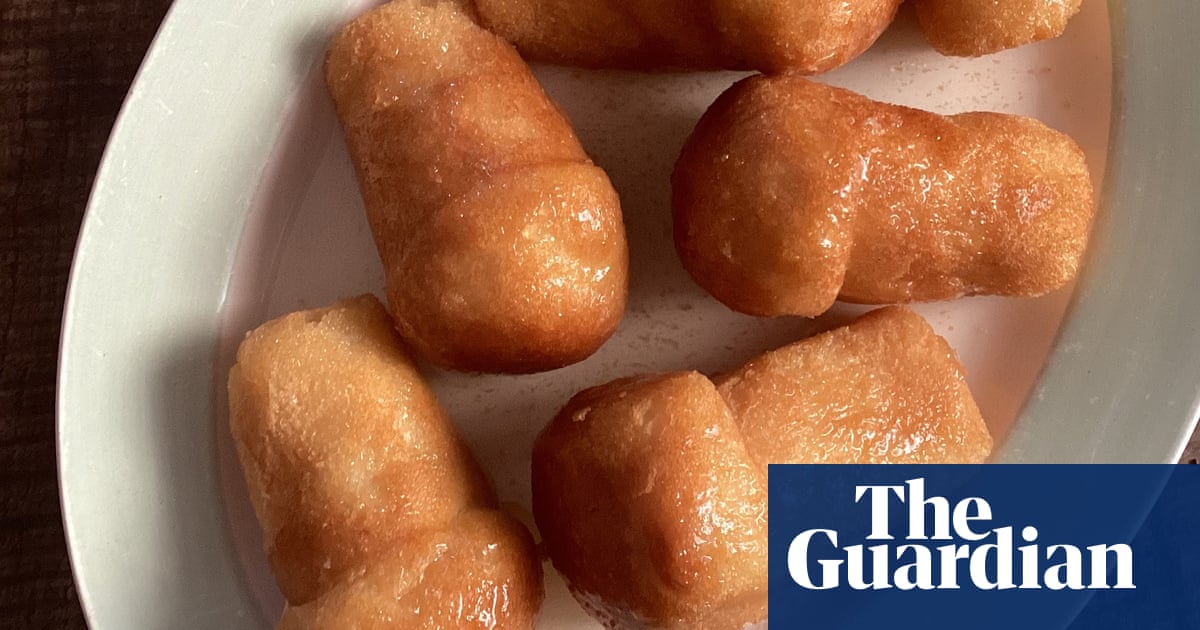Someone I know and admire very much, and who seems in excellent health at between 82 and 89 years old, has an espresso and a minibaba al rumevery day at about three o’clock – except Sundays, when he has ice-cream. Every now and then, I join him and we then walk for a bit (there is nothing like a caffeine-baba spring in your step), and congratulate each other for not smoking while both wishing that we had a cigarette.
In Poland, the word “baba” can refer to a variety of baked goods, and one in particular is made with rye flour and sweet wine. Baba al rum came about thanks to the greediness of twice king of Poland Stanislaus Leszczyński, who, exiled in Lorraine, thought hiskougelhopftoo dry, so asked for it to be soaked in rum. This inspired his pastry chef to perfect the dish and, in turn, subsequently inspired other pastry chefs, like baba dominoes. It is a project, though, and remember to chill the eggs.
Arrange the babas in a serving dish, then, just before eating, spoon over a little of the reserved syrup, so they shine.
In the Gastronomy of Italy, Anna del Conte describes babas soaked in rum as also being covered with enough thin icing to hold a few flaked almonds, and topped with a hot sauce made from sweet local wine – a description that makes a Sicilian cassata seem reasonably sweet (not that I don’t love the idea). Also, consider serving baba al rum with fridge-cold double or whipped cream and an espresso, and thengo.
Makes12
Oil,to grease300g plain flour12g fresh yeast,crumbled6 very cold eggs5g salt20g caster sugar100g butter, cut into 6 pieces
For the syrup350g caster sugarA few strips of lemon or orange zest100-150ml rum
Lightly oil 12 baba moulds or ramekins. Working in a food processor with a dough hook, put the flour and crumbled yeast in the bowl, then start the hook at medium-low. Add the eggs one at a time, making sure each is incorporated before adding the next - this will take about eight minutes. Now add the salt and sugar, followed by the butter piece by piece, making sure each bit is incorporated before adding any more. Cover the bowl and leave to sit in a warm spot to rise and double in volume – this should take between two and three hours, depending on the temperature.
Rub your hands with water, then ease the dough away from the sides of the bowl (it will deflate). Still working with wet hands, pull off roughly 40g pieces of dough (it’s an idea to weigh the first one, to get an idea of the right size), then squeeze each lump tightly in your fist so it oozes into the lightly oiled moulds. Cover and leave to sit for an hour, or until the dough rises just above the top of the mould.
Arrange the moulds on a baking tray and bake at 200C (180C fan)/390F/gas 6 for 16-20 minutes, then remove and leave to cool completely, or overnight, before un-moulding.
Make the syrup by warming 500ml water with the sugar and a few strips of lemon or orange zest over a medium flame, stirring until the sugar dissolves. Pull off the heat, add the rum, then leave to cool until tepid. Add the babas and let them bob around like apples for a couple of minutes (help them along by turning occasionally). Then, with clean hands, lift out the babas one by one, squeeze gently (this helps enormously with absorption), then return to the syrup for another minute-long soak.
Lift out the babas out again and put them on a baking rack to drain. Pour the remaining syrup into a jug. Arrange the babas in a serving dish, then, just before eating, spoon over a little more of the syrup, so they shine.
